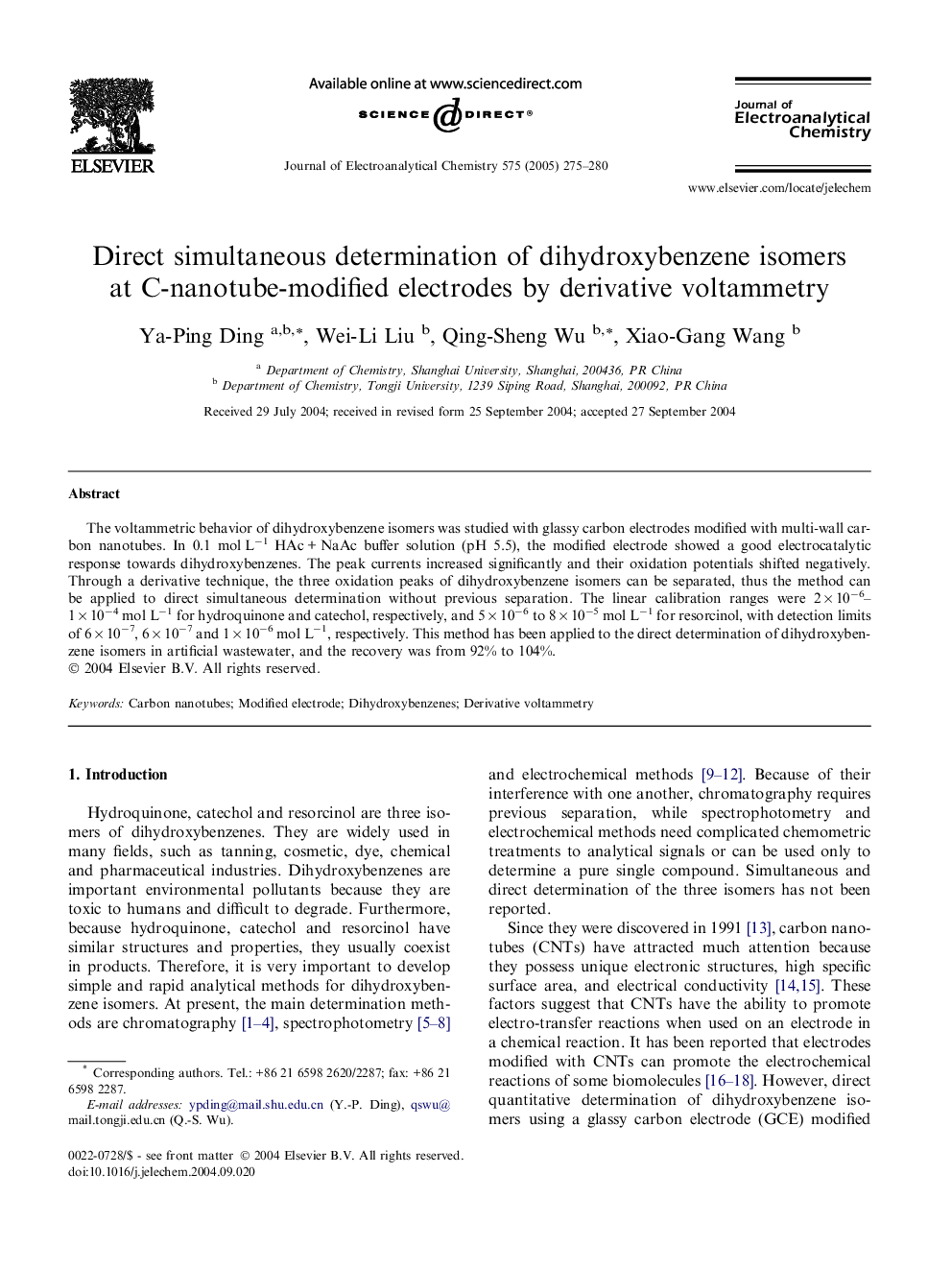| Article ID | Journal | Published Year | Pages | File Type |
|---|---|---|---|---|
| 10275992 | Journal of Electroanalytical Chemistry | 2005 | 6 Pages |
Abstract
The voltammetric behavior of dihydroxybenzene isomers was studied with glassy carbon electrodes modified with multi-wall carbon nanotubes. In 0.1 mol Lâ1 HAc + NaAc buffer solution (pH 5.5), the modified electrode showed a good electrocatalytic response towards dihydroxybenzenes. The peak currents increased significantly and their oxidation potentials shifted negatively. Through a derivative technique, the three oxidation peaks of dihydroxybenzene isomers can be separated, thus the method can be applied to direct simultaneous determination without previous separation. The linear calibration ranges were 2 Ã 10â6-1 Ã 10â4 mol Lâ1 for hydroquinone and catechol, respectively, and 5 Ã 10â6 to 8 Ã 10â5 mol Lâ1 for resorcinol, with detection limits of 6 Ã 10â7, 6 Ã 10â7 and 1 Ã 10â6 mol Lâ1, respectively. This method has been applied to the direct determination of dihydroxybenzene isomers in artificial wastewater, and the recovery was from 92% to 104%.
Related Topics
Physical Sciences and Engineering
Chemical Engineering
Chemical Engineering (General)
Authors
Ya-Ping Ding, Wei-Li Liu, Qing-Sheng Wu, Xiao-Gang Wang,
